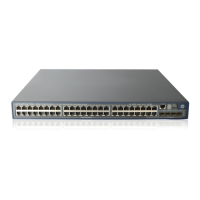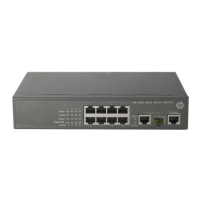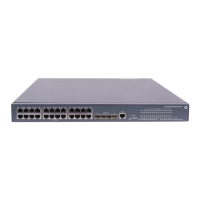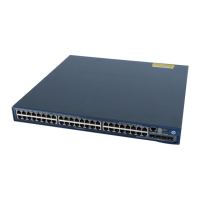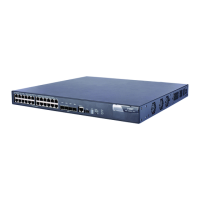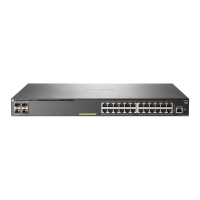119
Figure 41 Multicast source registration
Source
Server
Host A
Host B
Host C
Receiver
Receiver
Multicast packets
SPT
Join message
Register message
RPDR
As shown in Figure 41, the following describes the process that how a multicast source registers with the
RP:
1. The multicast source S sends the first multicast packet to multicast group G. Upon receiving the
multicast packet, the DR that directly connects the multicast source encapsulates the packet in a PIM
register message. Then it sends the message to the corresponding RP by unicast.
2. When the RP receives the register message, it extracts the multicast packet from the register
message and forwards the multicast packet down the RPT, and sends an (S, G) join message hop
by hop toward the multicast source. The routers along the path from the RP to the multicast source
constitute an SPT branch. Each router on this branch generates an (S, G) entry in its forwarding
table. The source-side DR is the root of the SPT, and the RP is the leaf of the SPT.
3. The subsequent multicast data from the multicast source travels along the established SPT to the RP.
Then the RP forwards the data along the RPT to the receivers. When the multicast traffic arrives at
the RP along the SPT, the RP sends a register-stop message to the source-side DR by unicast to stop
the source registration process.
NOTE:
The RP is configured to initiate an SPT switchover as described in this section. Otherwise, the DR at the
multicast source side keeps encapsulating multicast data in register messages, and the registration
process will not stop unless no outgoing interfaces exist in the (S, G) entry on the RP.
Switchover to SPT
In a PIM-SM domain, a multicast group corresponds to one RP and RPT. Before the SPT switchover
occurs, the DR at the multicast source side encapsulates all multicast data destined to the multicast group
in register messages and sends these messages to the RP. Upon receiving these register messages, the
RP extracts the multicast data and sends the multicast data down the RPT to the DRs at the receiver side.
The RP acts as a transfer station for all multicast packets. The whole process involves the following issues:
• The source-side DR and the RP must implement complicated encapsulation and de-encapsulation of
multicast packets.
• Multicast packets are delivered along a path that might not be the shortest one.

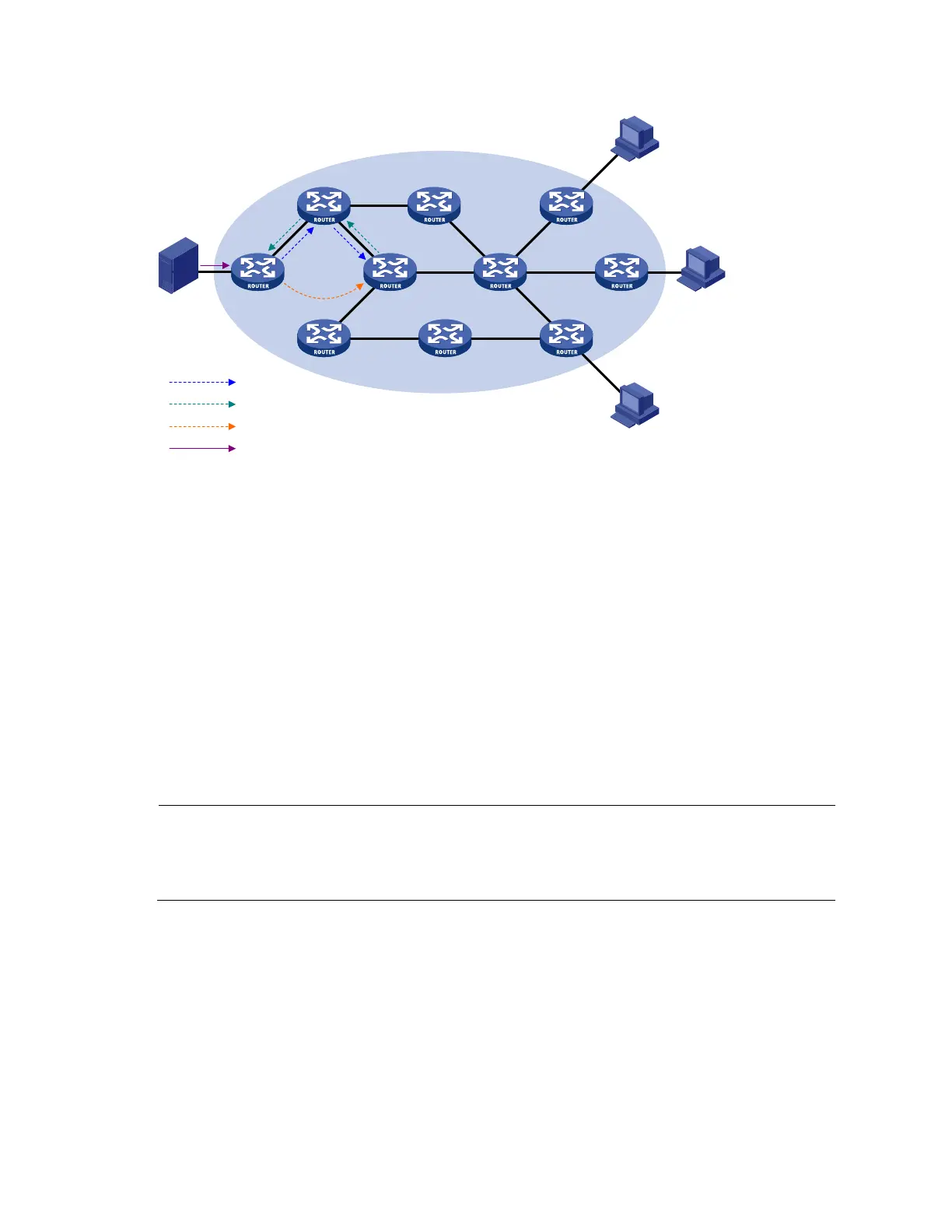